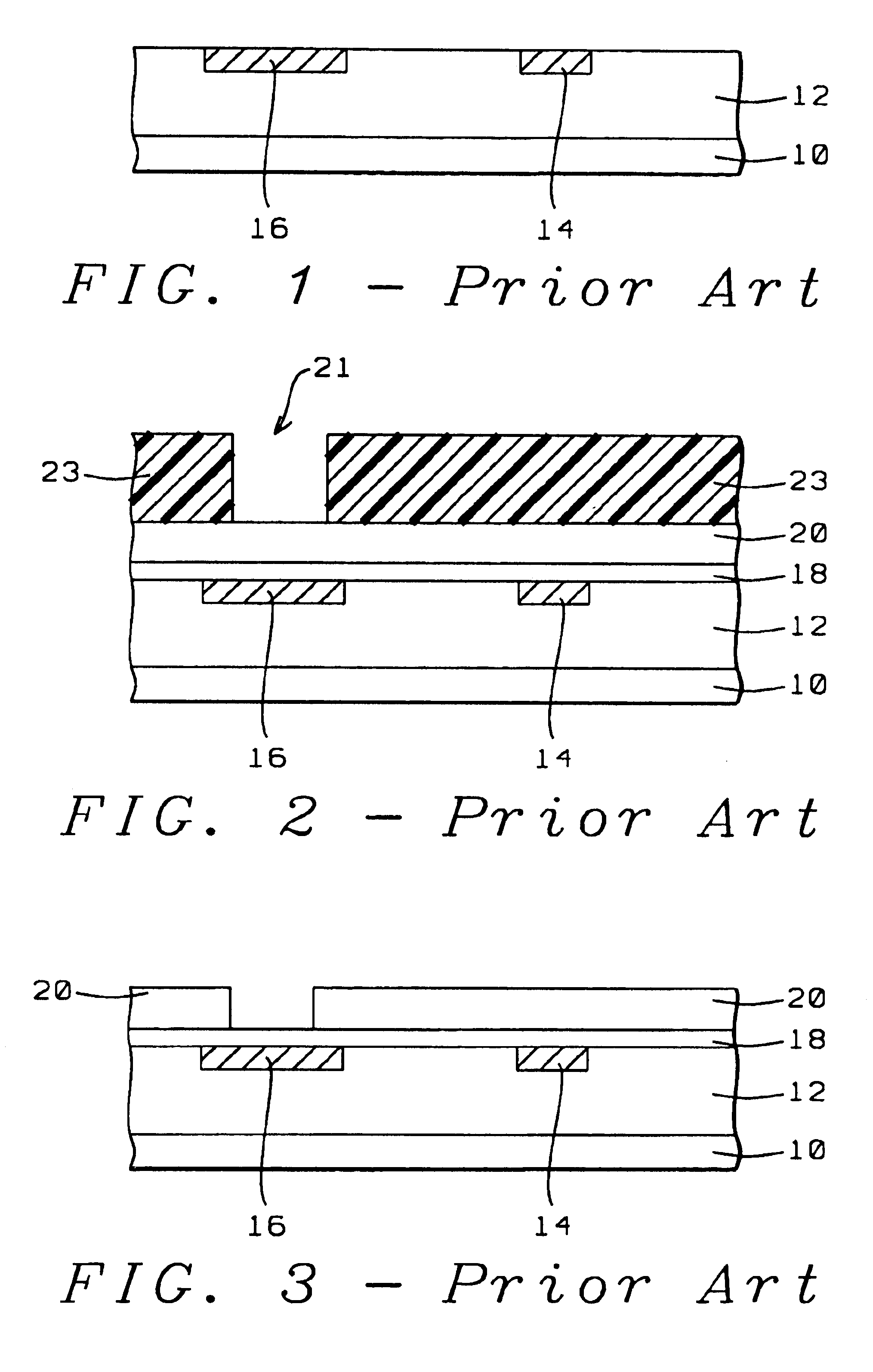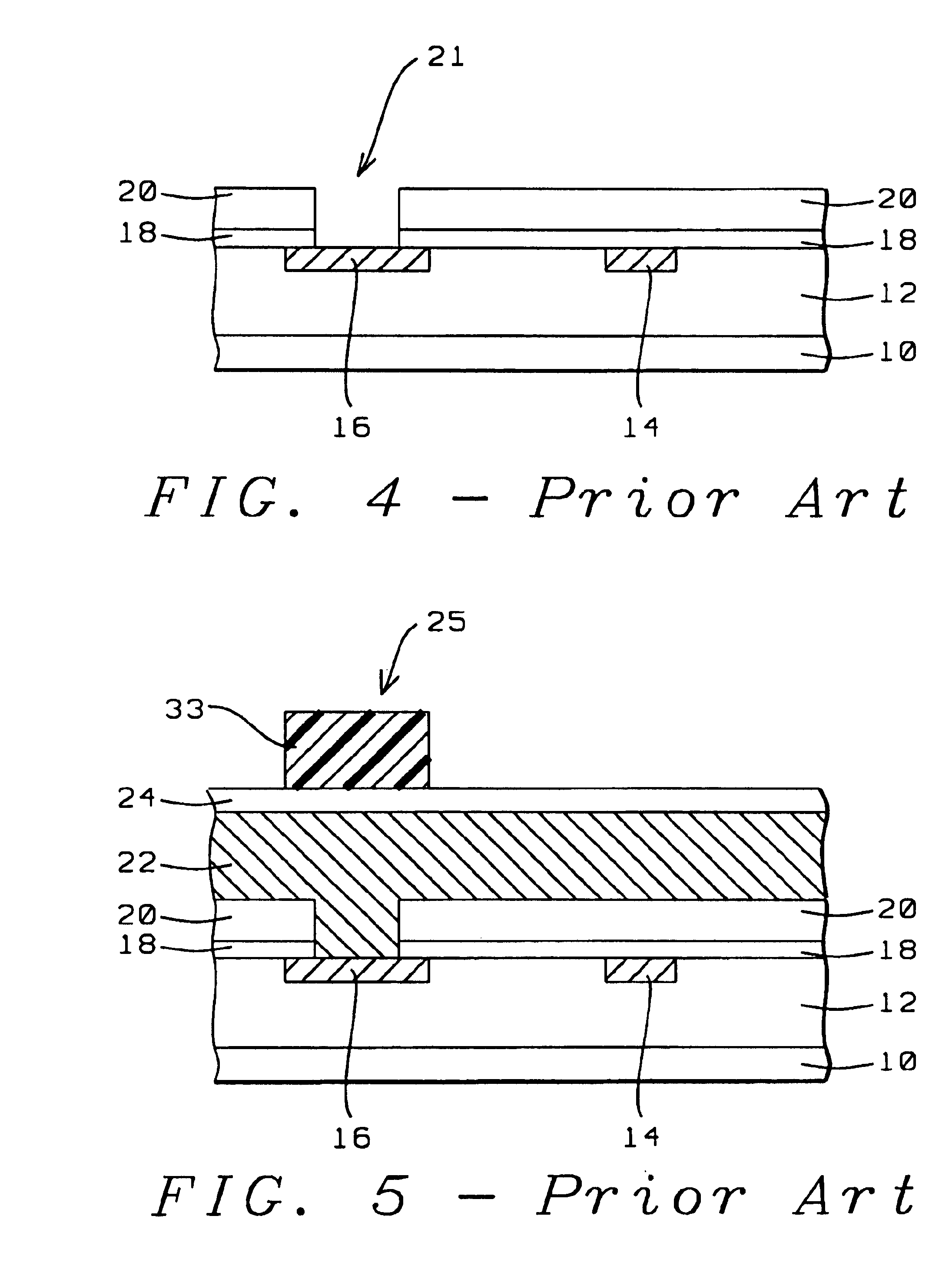Integrated process for fuse opening and passivation process for CU/LOW-K IMD
a technology of integrated circuit and passivation process, which is applied in the direction of semiconductor devices, semiconductor/solid-state device details, electrical equipment, etc., can solve the problems of increasing strict limitations on the technology used for semiconductor device creation, device feature size, and conventional approach to creating poly fuse, so as to improve overall semiconductor package reliability, reduce the number of photoresist and etching steps, and no additional manufacturing cost
- Summary
- Abstract
- Description
- Claims
- Application Information
AI Technical Summary
Benefits of technology
Problems solved by technology
Method used
Image
Examples
Embodiment Construction
[0037]In order to enhance an understanding of the invention, a conventional method of creating a contact pad opening combined with creating a fuse opening will first be highlighted. For this purpose, FIGS. 1 through 11 will be used.
[0038]Referring now first specifically to FIG. 1, there is shown a cross section of a semiconductor surface 10, typically the surface of a monocrystalline silicon substrate, over which active semiconductor devices (not shown) have been created. Electrical access must be provided to the semiconductor devices that have been created in or over the surface of substrate 10. For this purpose, a layer 12 of conductive interconnect traces has been created whereby this layer may contain one or more overlying and interconnected layers of conductive traces, overlying layers being interconnected with the conventional contact plugs or via interconnects. The details of the interconnect layers that are assumed to be provided in layer 12 are not highlighted in the cross ...
PUM
 Login to View More
Login to View More Abstract
Description
Claims
Application Information
 Login to View More
Login to View More - R&D
- Intellectual Property
- Life Sciences
- Materials
- Tech Scout
- Unparalleled Data Quality
- Higher Quality Content
- 60% Fewer Hallucinations
Browse by: Latest US Patents, China's latest patents, Technical Efficacy Thesaurus, Application Domain, Technology Topic, Popular Technical Reports.
© 2025 PatSnap. All rights reserved.Legal|Privacy policy|Modern Slavery Act Transparency Statement|Sitemap|About US| Contact US: help@patsnap.com



